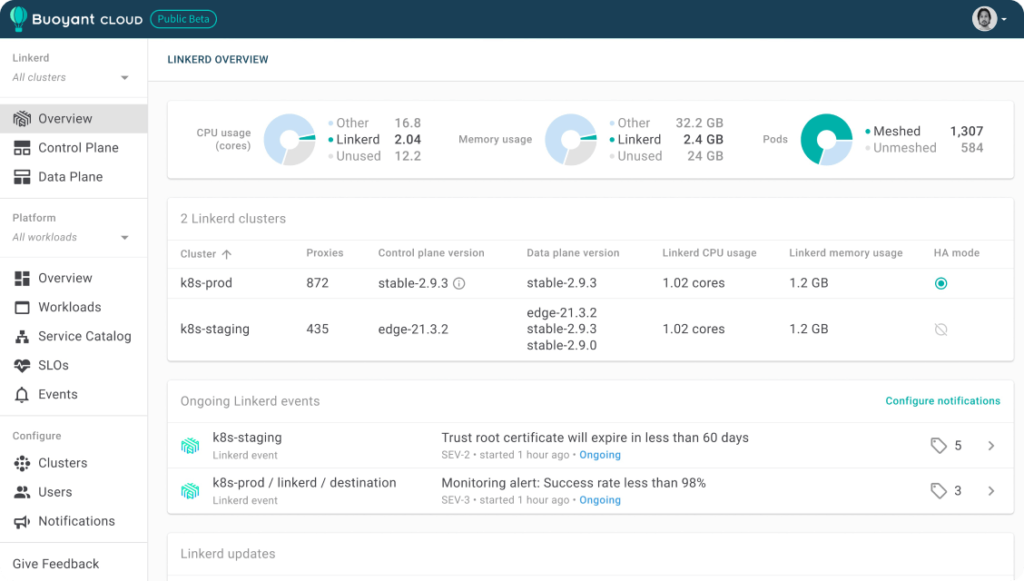Buoyant Preps to Manage Linkerd Service Mesh in the Cloud
Buoyant announced today it is making available a public beta of a cloud service through which multiple instances of the open source Linkerd service mesh can be managed.
William Morgan, CEO of Buoyant, says Buoyant Cloud provides access to a dashboard through which IT teams can track the health metrics of all the Kubernetes clusters running the Linkerd service mesh.
In addition, sanity checks and proactive alerts about the health of any instance of the Linkerd service mesh will be automatically generated and, if needed, IT teams can also request help from Linkerd experts via the cloud service.
All Linkerd users have free access to Buoyant Cloud, which can be used to manage up to 50 workloads spanning two clusters worth of data during the free beta.
In the longer term, Buoyant Cloud will rotate mesh transport layer security (TLS) certificates, manage Linkerd installs and upgrades and enable IT teams to set security and traffic policies for clusters, adds Morgan. Like most other IT platforms, the management plane for service meshes is shifting toward the cloud, notes Morgan.
Linkerd has emerged as a lightweight service mesh that is gaining popularity with developers as an alternative to rival platforms that provide a lot of additional capabilities that are typically only required by large enterprise and web-scale companies. Linkerd, in comparison, now weighs in at under 200Mb at startup and can be easily deployed by a single developer. The latest release is designed to support extensions to the platform that an IT team can create and deploy as they see fit. That approach allows each IT team to decide how large they ultimately want their service mesh to become based on the tasks at hand versus deploying a general-purpose service mesh loaded with capabilities they may never need.
As the number of Linkerd instances within an organization increases, the need for a cloud service to centrally manage them has become apparent, says Morgan. In fact, Buoyant has seen a surge in Linkerd adoption in the last year mainly because it provides a simpler approach to managing application programming interfaces (APIs), notes Morgan.
It’s still early days as far as the adoption of any service mesh is concerned. However, as developers deploy more microservices-based applications, the number of APIs that need to be managed creates the need for a more robust alternative to a gateway or proxy software. Eventually, service meshes will also provide the critical missing layer of abstraction that is needed to make network operations a more natural extension of any DevOps workflow.
Linkerd is being advanced under the auspices of the Cloud Native Computing Foundation (CNCF). There are multiple open source and commercial alternatives that are also generally available. In some instances, organizations may find themselves employing multiple service meshes based on the preferences of individual development teams.
One way or another, however, it’s now just a question of when organizations will be employing service meshes rather than if.



